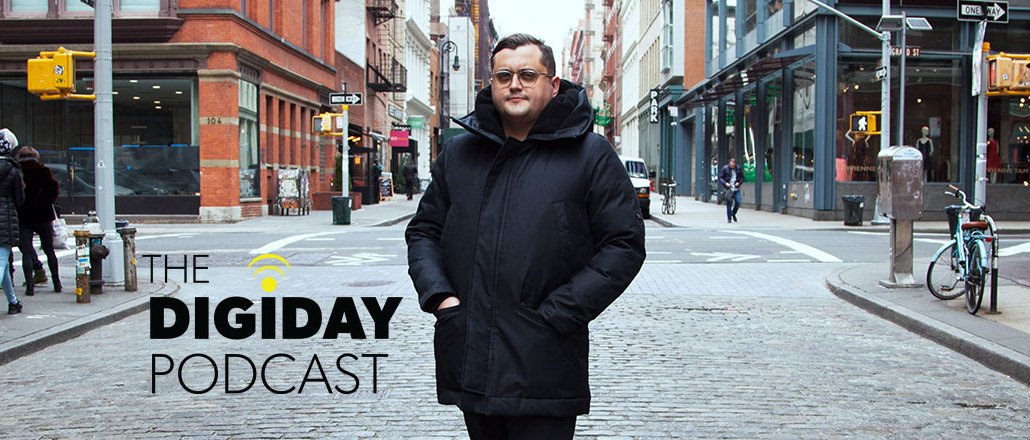Digital media needs to make user experience a priority — or else

Digital publishing, seeming perpetually up against terrible economics that prize quantity over quality, has reached a point where navigating it is akin to “walking across a sticky cinema store,” according to Barbarian Group executive director of media and distribution Colin Nagy.
That’s because media companies have lost sight of the user experience in their many tradeoffs the environment requires in order to make money from ads. The rise of ad blocking is no surprise in this context, as publishers have spent much of the last decade trying to figure out how much interruption, sluggishness and viruses their audiences will put up with.
“User experience on its best day has a tremendous amount of empathy for the end user,” Nagy said on this week’s Digiday Podcast. “The idea of media experience and putting things in harmonious environments and not striving for scale for scale’s sake is important. You can have your scale stuff and have interesting things around that.”
Here are some highlights from the podcast, lightly edited for clarity.
Modern media is a series of conflicts.
There’s a nirvana of media where great content attracts great audiences that are supported by great advertising. But that’s not reality. The reality is publishers dependent on advertising are often put into conflict with the demands of the users and the demands of their advertisers. Even on the advertising side, creative shops like The Barbarian Group often are in conflict with media buying shops, Nagy said.
“One of the obstacles I run into all the time is working with some of the big media agencies. All they care about is reach, spreadsheets and kickbacks. You can come with the most interesting ideas to engage audiences and they’ll just say, ‘yeah, yeah, yeah, scram.’”
We’ve reached peak native ads.
Publishers scrambled the last two years to build out content studios, in many ways aping the BuzzFeed and Vice models to add agency services in the hopes of getting out of the commoditized display media trap. The devil, however, is in the execution. Being an agency isn’t easy, as these publishers will find out, Nagy said.
“It is very hard to square a brand message and something interesting and put them together in a way that’s palatable, cool and that people like,” he said. “Everyone was saying, ‘let’s do Snowfall for a brand.’ Good luck making that work from a budget standpoint. There is a level of arrogance that [they] can do this no problem. The fight you have to fight with a brand to make something cool and find that contrarian or hidden story in what you’re trying to do is hard When brands are going straight to publishers, publishers don’t understand a lot of the things brands need strategically. They’re good at making things their audience cares about. That gap is difficult.”
The Subservient Chicken today would probably be drown out.
Back in 2004, The Barbarian Group was put on the map thanks to The Subservient Chicken, a viral site it built for Burger King that showed a man in a chicken costume who seemingly responded to visitor commands. Today, such a viral sensation would probably be impossible.
“Maybe it would have gotten lost,” Nagy said. “Maybe the Kardashian app would come out that day. Reading the currents of the day-to-day Internet now, and how clogged things are, it’s much different.”
Many brands are overrating influencer marketing.
The rise of an entire class of YouTube, Instagram and Snapchat stars, all with eye-popping follower numbers, has brands salivating. They’re eyeing these influencers up as a new media distribution network to reach those pesky millennials. And they’re wasting a lot of money in the scramble, according to Nagy.
“A lot of brands are just trying to blindly give silver briefcases of cash to these influencers and hope for the best,” he said. “That’s foolish, and a lot of brands are getting played right now. You can have someone talking about your brand that has a bajillion followers, but in many cases you find they’re 16-year-olds in Indonesia. There’s a lot of people who have gamed the system.”
More in Media

Media Briefing: Publishers who bet on events and franchises this year are reaping the rewards
Tentpole events and franchises are helping publishers lock in advertising revenue.

With Firefly Image 3, Adobe aims to integrate more AI tools for various apps
New tools let people make images in seconds, create image backgrounds, replacing parts of an image and use reference images to create with AI.

Publishers revamp their newsletter offerings to engage audiences amid threat of AI and declining referral traffic
Publishers like Axios, Eater, the Guardian, theSkimm and Snopes are either growing or revamping their newsletter offerings to engage audiences as a wave of generative AI advancements increases the need for original content and referral traffic declines push publishers to find alternative ways to reach readers.





